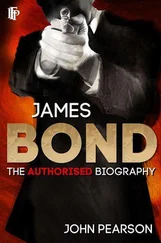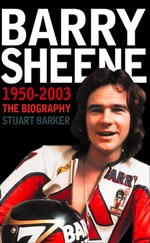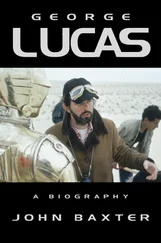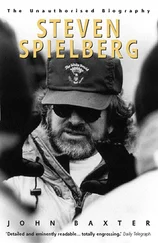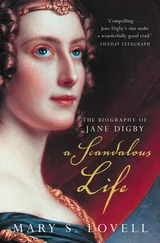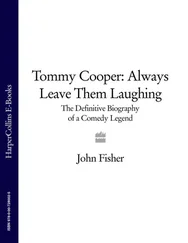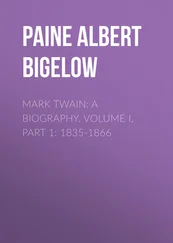At eleven, he would normally have moved from PS.41 to IS.71. Instead, Virginia enrolled him in the Elizabeth Irwin High School on Charlton Street, the high school of the Little Red Schoolhouse. The ‘Red’ in Little Red Schoolhouse uncompromisingly indicated its political leanings. Many of its teachers were blacklisted. Firebrand folk-singer Woody Guthrie performed there. A typical school excursion was a week in a steel town. Parents and children marched in the May Day parade, sometimes with a red flag fluttering from the pram that carried their youngest child.
To counter accusations that its curriculum was too ‘liberal’, Elizabeth Irwin pushed to get its students into reputable colleges. For Bobby, this was bad news. School bored him. He disliked books, preferring comics, from which he learned to read. Virginia didn’t dissuade him. She felt children should develop at their own speed, finding naturally the things that interested them. From the age of ten, Bobby was allowed to choose his own clothes. Virginia also sent him briefly to Boy Scout camp, but he disliked the experience so much he never repeated it.
Virginia was busy with her work, her political activities – she continued to write, edit and produce left-wing propaganda – and her personal life. Though she never remarried, she had a succession of lovers, among them the film critic Manny Farber, who wrote for the Nation , the New Republic , the New Leader and other left-wing magazines. Both painter and writer, Farber, unlike Robert, was charismatic, politically savvy, and unashamedly heterosexual. Bobby deeply resented the relationship. Years later, when Farber approached him at a party and reminded him he’d once been his mother’s boyfriend, De Niro fled.
Bobby remained at Elizabeth Irwin through seventh and eighth grades, but never looked a likely candidate for college. Though he was not stupid, his perfectionist nature drove him to recopy his work over and over, as his father did his canvases, while the rest of the class moved on.
Virginia volunteered him as a model for an article she was writing for Glamour magazine on the differences between public and private schooling in New York – Bobby representing the ‘funky’ face of the public-school system. A photograph illustrating the article shows a slightly dumpy Bobby with tousled hair in a zippered leather jacket, crumpled trousers, shirt pulled outside the belt, hands shoved in the pockets. He regards the camera sideways with a gaze not so much belligerent as indifferent.
As he entered adolescence and shed his childish plumpness, other aspects of life in Greenwich Village attracted Bobby’s attention. The area was changing. In particular, Italians moving in from the West Side were squeezing the Anglo community of the downtown area, just as they, in turn, would be squeezed by the invading Chinese two decades later.
Despite a solitary nature, Bobby was drawn to the Italian and Sicilian youth gangs now appearing on the streets. Though his skin was pale, he could have been one of them. The gangs also radiated superiority and power. Being in the headlines made the street kids bolder. Knives and guns became more evident, the swagger more pronounced.
De Niro affected the gang members’ silk shirts, their slim-cut leather jackets, the hat tilted on the back of the head. His friends nicknamed him ‘Bobby Milk’ because of his pallor. At seventeen, he was recognisably a cadet version of Johnny Boy, the street punk he would play in Mean Streets.
Johnny Boy likes explosions. He blows up a mailbox, and throws dynamite from the rooftops. As a kid, Bobby acted as a ‘steerer’ for one of the Chinese firecracker vendors across Mott Street. Kids in the Village preyed on boys who turned up from the suburbs in search of the giant cherry bombs and other dangerously large fireworks employed by the Chinese at their festivals. In Mean Streets , Martin Scorsese would show two of these innocents being ripped off by a couple of streetwise Village guys.
On Christmas Day 1970, when Brian De Palma introduced De Niro to Scorsese, each would recognise the other from his teenage gang affiliations. But De Niro was never part of a gang, any more than was Scorsese, who only moved to the Lower East Side in 1949, when his garment-maker father went broke, and who, as a lifelong asthmatic, observed street life mainly from his bedroom window.
That said, both recognised and respected the reality of street crime. When he made Sleepers in 1996, De Niro still recalled Hell’s Kitchen, the tough area near the intersection of 42nd Street and Broadway: ‘It was Italian, Irish, Latin, Puerto Rican. When I was growing up downtown, it was a neighbourhood where you would get hassled, where you wouldn’t go.’ Both he and Scorsese were accustomed to being beaten up, and knew better than to complain to the law. Only by enduring punishment and saying nothing could they earn the respect of the tough guys who ran the streets.
As a kind of protective coloration, De Niro began going to Sunday mass with his new friends at the old St Patrick’s Cathedral on Mulberry Street. For the new generation of Italian-Americans, that church had a special significance, reflected in the way their film-makers would adopt it as a location. Scorsese, who served there as altar boy, used it for the climax of his first film, Who’s that Knocking at my Door? , as did Francis Coppola for the christening that closes The Godfather.
It incensed Robert to see his son embracing both the religion he’d abandoned and a lifestyle he thought dangerous. ‘When I was about thirteen,’ recalled Bobby, ‘we ran into each other in Washington Square Park. I was with a group of street kids, and he got fairly worked up, going on and on about bad influences.’
De Niro relived the moment years later when he made his debut as director with A Bronx Tale , about a man trying to prevent his young son idolising a career criminal. As Ray Vitti, the gang boss in Analyze This , he also cites a similar event from his own fictitious childhood.
As if to prove that her artistic ambitions had never been more than infatuation with Greenwich Village bohemia, Virginia thrived as a businesswoman. She started a small service, called Academy, which turned manuscripts into camera-ready copy for printers. Half of the 14th Street apartment became her office, where she installed a couple of typewriters and a Varitype machine. Before long, she had a staff of ten, most of whom, in defiance of the lease, worked in the apartment. Bobby became so angry with the noise of the machines that he threatened to throw them out the window. Virginia took the hint, and in 1957 moved everything into an office at 68 7th Street.
In 1953, the De Niros finally divorced. Bobby continued to spend time in Robert’s studio, but, inevitably, both recognised a growing gap. At this time they sometimes browsed Village bookshops, like Robert Wilson’s Phoenix Bookstore on Cornelia Street, which specialised in literary first editions. Wilson, a friend of W.H. Auden and the bibliographer of Gertrude Stein, was a congenial conversationalist, and De Niro Sr relaxed in his company, even drawing a cover for one of Wilson’s catalogues.
‘I saw him often,’ recalls Wilson. ‘He was shy more than antisocial. He came into the shop often, at least once with the teenage son. He was gay, and came in quite often, mainly, I think, because he had an obvious crush on my then-assistant Marshall Clements. He was not a collector of rare books, but was a reader of Gertrude Stein’s works, and often bought one of her books for reading purposes.’
Marshall Clements too remembers De Niro Sr well. ‘I first met Bob Sr and Virginia Admiral in 1960 or ‘61, along with others of their circle, through the painter, Nell Blaine, who often gave parties for her old friends, mostly fellow painters. So by the time I started working at the Phoenix Book Shop with Bob Wilson in 1968, Bob De Niro and I were old acquaintances. He lived nearby in the Village, and when he found out I was working at the shop, he frequently stopped by to visit.
Читать дальше

